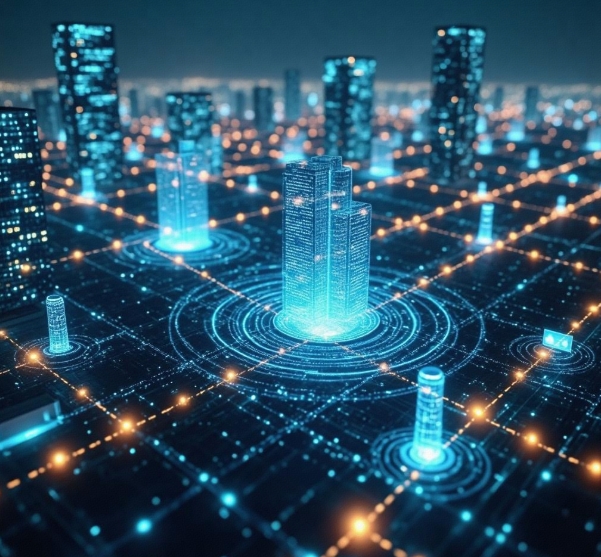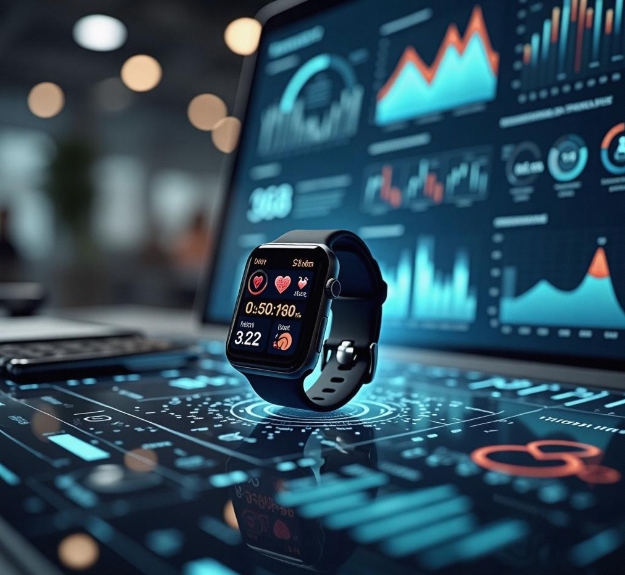The Integration of IoT Development and Big Data: How to Optimize Analysis
- latest articles
- 1.DApp Development & Customization: Merging Diverse Market Needs with User Experience 2.Analysis of the Core Technical System in DApp Project Development 3.How to achieve cross-chain interoperability in Web3 projects? 4.How does the tokenization of points reconstruct the e-commerce ecosystem? 5.How to Set and Track Data Metrics for a Points Mall? 6.What is DApp Development? Core Concepts and Technical Analysis 7.Inventory of commonly used Web3 development tools and usage tips 8.Development of a Distribution System Integrated with Social E-commerce 9.Six Key Steps for Businesses to Build a Points Mall System 10.What is DApp Development? A Comprehensive Guide from Concept to Implementation
- Popular Articles
- 1.Future Trends and Technology Predictions for APP Development in 2025 2.Analysis of the DeFi Ecosystem: How Developers Can Participate in Decentralized Finance Innovation 3.From Zero to One: How PI Mall Revolutionizes the Traditional E-commerce Model 4.DAPP Development | Best Practices for Professional Customization and Rapid Launch 5.How to Develop a Successful Douyin Mini Program: Technical Architecture and Best Practices 6.Recommended by the Web3 developer community: the most noteworthy forums and resources 7.From Cloud Computing to Computing Power Leasing: Building a Flexible and Scalable Computing Resource Platform 8.Shared Bike System APP: The Convenient Choice in the Era of Smart Travel 9.How to Create a Successful Dating App: From Needs Analysis to User Experience Design 10.From Design to Development: The Complete Process of Bringing an APP Idea to Life
With the continuous advancement of technology, the Internet of Things (IoT) and Big Data have become two major development directions in the modern technology field. IoT embeds sensors and communication modules into objects, enabling various items to connect and transmit data, thereby achieving intelligent management and control. Big Data, on the other hand, refers to extracting value and information from massive and diverse datasets using advanced analytical techniques. The combination of these two has brought revolutionary changes to many industries, particularly playing a significant role in optimization analysis.
This article will explore the ways in which IoT and Big Data are combined, analyzing how to leverage their strengths for data collection, processing, and analysis to drive the intelligent development of various industries.
Fundamental Concepts of IoT and Big Data
Internet of Things
The Internet of Things is a network that connects various devices and objects via the internet to enable information exchange and communication. Through technologies such as sensors, Radio Frequency Identification (RFID), and wireless communication, objects can not only interact with humans but also automatically sense and respond to changes in their environment. For example, temperature sensors in smart homes can adjust indoor temperatures based on user settings, while intelligent transportation systems can collect real-time traffic flow data to predict and optimize road conditions.
Big Data
Big Data refers to massive datasets that cannot be effectively processed using traditional data processing methods and tools. The key characteristics of Big Data are the "4Vs": Volume, Variety, Velocity, and Value. The value of Big Data lies in its ability to extract useful insights from vast amounts of information, helping businesses make decisions, improve efficiency, and reduce costs.
The Integration of IoT and Big Data
The integration of IoT and Big Data is complementary, significantly enhancing data collection and analysis capabilities. Specifically, IoT provides abundant data sources, while Big Data offers powerful capabilities to analyze this data. Here are the main ways in which they are combined:
1. Data Collection and Transmission
One of the core functions of IoT is data collection. Various smart devices, sensors, cameras, etc., continuously collect data from the environment, devices, or people, transmitting this data to cloud platforms or Big Data platforms via networks. For IoT devices, this data includes various sensing information such as temperature, humidity, motion status, etc. Big Data technology can process this data in real-time or in batches, providing raw material for further analysis.
For example, in smart manufacturing, industrial equipment monitors its operational status in real-time through IoT technology and transmits data to the cloud. This data includes information such as operating temperature, vibration frequency, and working hours. By analyzing this information in real-time with Big Data technology, early signs of equipment failure can be detected promptly, avoiding sudden breakdowns and improving production efficiency.
2. Data Storage and Management
Data generated by IoT is often massive and diverse, including both structured and unstructured data. Big Data platforms demonstrate significant advantages in this regard. Through distributed storage technology, IoT data can be stored and managed efficiently while ensuring data security and availability. For instance, using distributed systems like Hadoop allows for the storage and management of different types of data, ensuring that the system can respond quickly even with extremely large data volumes.
3. Data Analysis and Mining
Data analysis is a critical component of the integration of IoT and Big Data. Through Big Data analysis techniques, valuable information can be extracted from massive IoT datasets, helping businesses make better decisions. These analytical methods include data mining, machine learning, and artificial intelligence algorithms. The combination of real-time data provided by IoT and the computational power of Big Data platforms enables businesses to make decisions in very short timeframes and even predict future trends.
For example, in smart agriculture, by deploying numerous sensors in fields to collect data on soil moisture, temperature, and climate changes, and then analyzing this data with Big Data techniques, crop growth conditions and the probability of pest and disease outbreaks can be predicted. This data not only helps farmers increase crop yields but also optimizes planting strategies without increasing resource consumption.
Application Scenarios of IoT and Big Data Integration
1. Smart Cities
Smart cities are a typical application scenario of IoT and Big Data integration. In smart cities, systems such as transportation, energy, healthcare, and security can be monitored and managed through IoT devices. Devices like traffic signals, smart streetlights, and city trash bins are interconnected via IoT technology, collecting data in real-time. Big Data technology can then analyze this data to optimize urban operational efficiency. For example, by analyzing real-time traffic flow data, city managers can respond immediately to congestion, adjust traffic signals, reduce accidents, and improve urban mobility efficiency.
2. Health Management
In the healthcare field, the integration of IoT and Big Data provides new solutions for remote health management. Wearable devices (such as smartwatches and health monitoring instruments) track user data like heart rate, blood pressure, and sleep quality, transmitting this data to the cloud for storage and analysis in real-time. Doctors can use Big Data analysis to understand patients' health conditions and provide personalized health advice. This approach not only offers more timely health monitoring for patients but also helps prevent potential health issues effectively.
3. Smart Manufacturing
Smart manufacturing is another important application area for IoT and Big Data integration. Traditional manufacturing faces issues such as low production efficiency, significant resource waste, and difficulty in ensuring quality. Through IoT technology, manufacturing equipment can monitor various parameters in the production process in real-time, such as temperature, humidity, and pressure. Big Data technology can analyze this real-time data to predict equipment failures, optimize production lines, and improve efficiency. Additionally, through Big Data analysis, businesses can identify customer demand trends, adjust production strategies, and reduce inventory backlog.
4. Smart Retail
The smart retail sector is also actively adopting IoT and Big Data technologies. By installing IoT sensors in stores, retailers can monitor customer shopping behaviors in real-time, such as the time customers spend in front of a product and purchase frequency. Through Big Data analysis, retailers can understand customer shopping habits, predict sales trends, and adjust inventory management and product layouts to enhance customer satisfaction and sales.
Challenges and Prospects of Continuous Optimization Analysis
Although the integration of IoT and Big Data holds immense potential, several challenges remain in practical applications:
Data Privacy and Security Issues: With the widespread deployment of IoT devices, data breaches and privacy protection have become significant concerns. Ensuring the security of data collected by IoT during transmission, storage, and analysis is an urgent issue to address.
Data Standardization Issues: IoT involves numerous types of devices, and the data formats collected by different devices vary, making data integration and analysis challenging. Establishing global data standards to ensure compatibility between different devices is a problem that needs to be solved in the integration of IoT and Big Data.
Real-Time and Accuracy: Data generated by IoT devices is typically real-time, requiring Big Data platforms to process and analyze this data in real-time to maximize its value. However, real-time data analysis often demands greater computational power and higher storage capacity, posing higher requirements for technical infrastructure.
Despite these challenges, with continuous technological advancements, the integration of IoT and Big Data will bring broader application prospects. In the future, this integration will further promote the convergence of cutting-edge technologies like artificial intelligence and blockchain, enabling more intelligent and efficient industrial development.
Conclusion
The integration of IoT and Big Data offers immense potential for optimizing analysis and decision-making across various industries. From smart cities to smart manufacturing, and from health management to smart retail, this combination not only enhances business efficiency but also provides more precise and timely decision support. However, to realize its full value, issues such as data privacy, standardization, and real-time analysis must be addressed. As technology continues to advance, the fusion of IoT and Big Data will play an increasingly important role in future development.
-

How to Use IoT Development to Enhance Supply Chain Efficiency
With the rapid development of the global economy and the deepening of digital tr···
-

Development and Innovation of the Internet of Things in the Healthcare Sector
With the rapid advancement of information technology, the Internet of Things (Io···
-

Data Storage and Analysis Methods in IoT Development
The Internet of Things (IoT) is one of the most revolutionary innovations in tod···

 Blockchain
Blockchain












